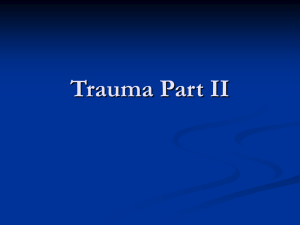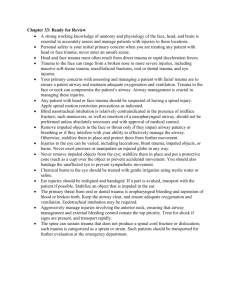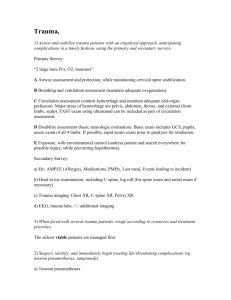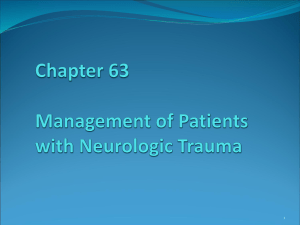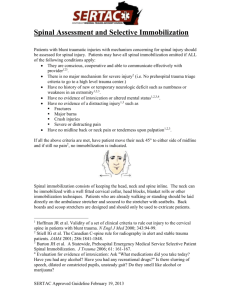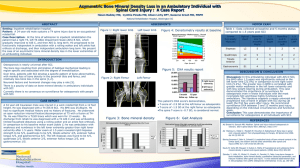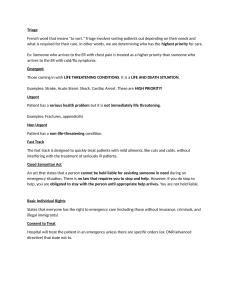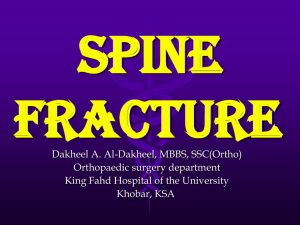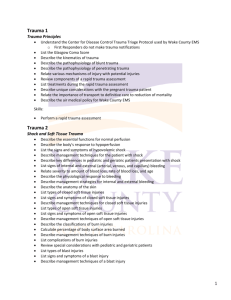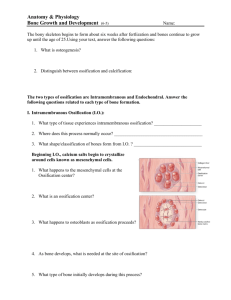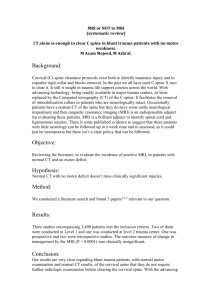AOCPMR Journal Club Feb. Article Discussion Heterotopic
advertisement
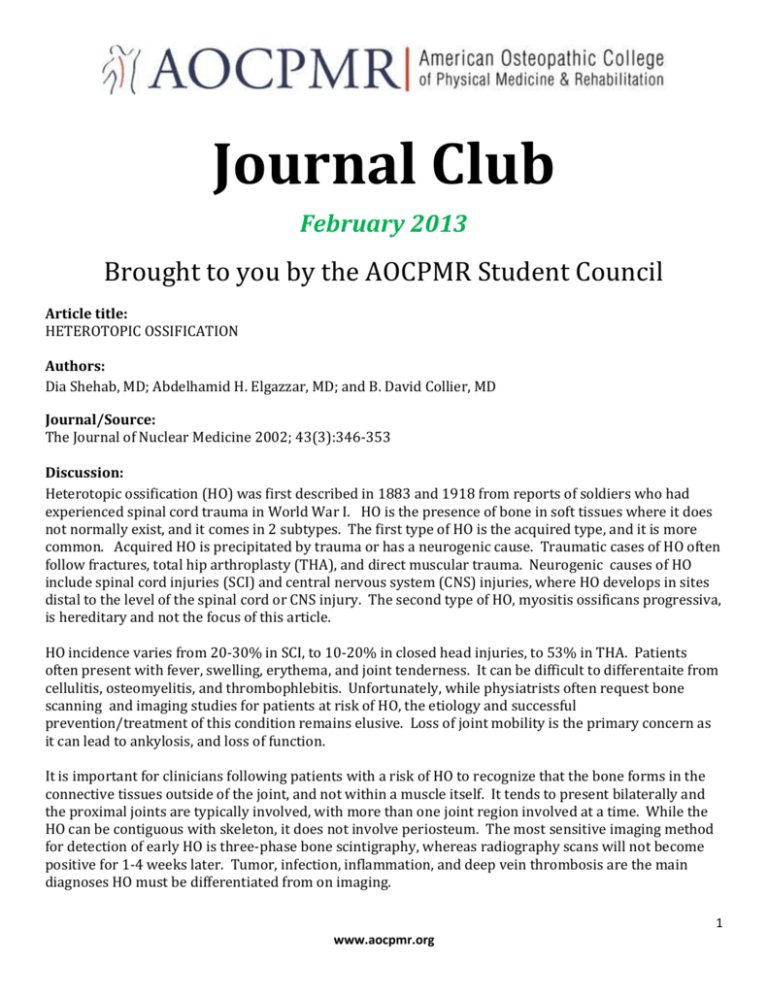
Journal Club February 2013 Brought to you by the AOCPMR Student Council Article title: HETEROTOPIC OSSIFICATION Authors: Dia Shehab, MD; Abdelhamid H. Elgazzar, MD; and B. David Collier, MD Journal/Source: The Journal of Nuclear Medicine 2002; 43(3):346-353 Discussion: Heterotopic ossification (HO) was first described in 1883 and 1918 from reports of soldiers who had experienced spinal cord trauma in World War I. HO is the presence of bone in soft tissues where it does not normally exist, and it comes in 2 subtypes. The first type of HO is the acquired type, and it is more common. Acquired HO is precipitated by trauma or has a neurogenic cause. Traumatic cases of HO often follow fractures, total hip arthroplasty (THA), and direct muscular trauma. Neurogenic causes of HO include spinal cord injuries (SCI) and central nervous system (CNS) injuries, where HO develops in sites distal to the level of the spinal cord or CNS injury. The second type of HO, myositis ossificans progressiva, is hereditary and not the focus of this article. HO incidence varies from 20-30% in SCI, to 10-20% in closed head injuries, to 53% in THA. Patients often present with fever, swelling, erythema, and joint tenderness. It can be difficult to differentaite from cellulitis, osteomyelitis, and thrombophlebitis. Unfortunately, while physiatrists often request bone scanning and imaging studies for patients at risk of HO, the etiology and successful prevention/treatment of this condition remains elusive. Loss of joint mobility is the primary concern as it can lead to ankylosis, and loss of function. It is important for clinicians following patients with a risk of HO to recognize that the bone forms in the connective tissues outside of the joint, and not within a muscle itself. It tends to present bilaterally and the proximal joints are typically involved, with more than one joint region involved at a time. While the HO can be contiguous with skeleton, it does not involve periosteum. The most sensitive imaging method for detection of early HO is three-phase bone scintigraphy, whereas radiography scans will not become positive for 1-4 weeks later. Tumor, infection, inflammation, and deep vein thrombosis are the main diagnoses HO must be differentiated from on imaging. 1 www.aocpmr.org Once the diagnosis is confirmed, passive range of motion exercises are recommended to help the patient maintain joint mobility. Diphosphonates, and nonsteroidal antiinflammatory drugs have been used for prophylaxis or treatment of HO. Radiation therapy has also been used to prevent or treat HO. Surgical intervention should be undertaken to treat HO only if the expected benefits outweigh the many risks. Questions: 1. Describe the pathogenesis of HO and why bone morphogenic protein is thought to be a causative agent? 2. What is the typical patterns of HO involvement in the hip? (Hint: see table 1, and review the classification of Schmidt and Hackenbroch.) 3. Which laboratory studies should a physiatrist order for a patient with a past history of musculoskeletal trauma or neurogenic trauma? 4. If early treatment of HO is important to prevent serious complications, why is surgical resection often delayed? Reviewer: Sarah Welch, OMS-II, AOCPMR Student Council Education Committee Representative 2 www.aocpmr.org





